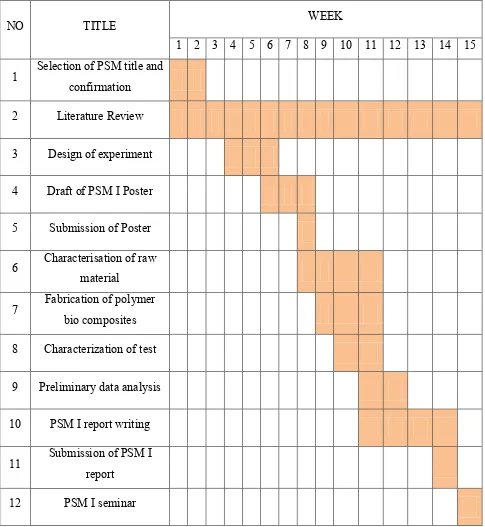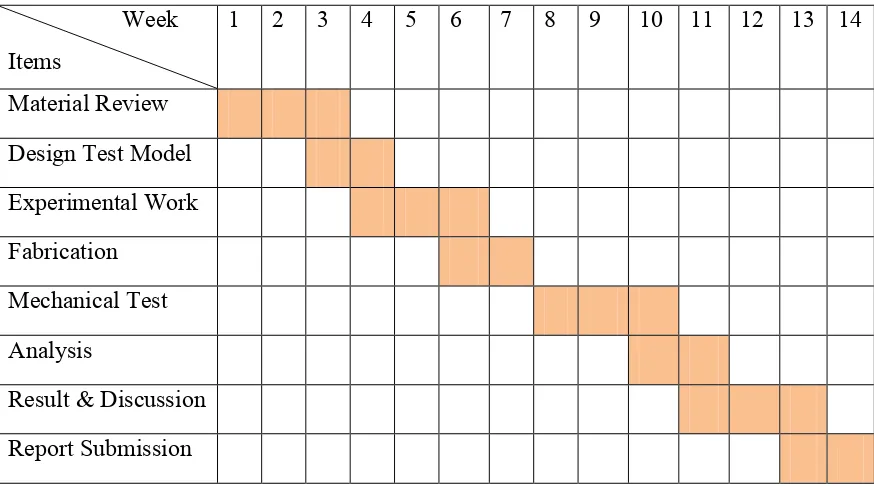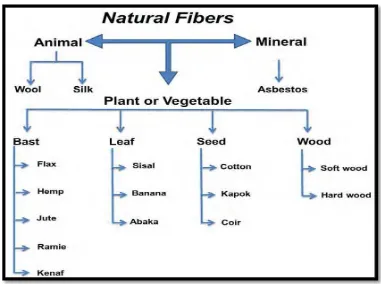SUPERVISOR DECLARATION
“I hereby declare that I have read this thesis and in my opinion this report is sufficient in terms of scope and quality for the award of the degree of
Bachelor of Mechanical Engineering (Structure-Materials)”
Signature: ...
Supervisor: DR. SITI HAJAR BT SHEIKH MD.FADZULLAH
THE EFFECT OF FIBRE SIZE, FIBRE/MATRIX INTERPHASE ADHESION AND FIBRE LOADING ON MECHANICAL PROPERTIES OF BIO
COMPOSITE
AIN FATHIHAH BINTI MOHAMED YUSOFF
This thesis is submitted in partial fulfillment of the requirements for the award of Bachelor of Mechanical Engineering (Structure & Materials)(HONS.)
Fakulti Kejuruteraan Mekanikal Universiti Teknikal Malaysia Melaka
SUPERVISOR DECLARATION
“I hereby declare that I have read this thesis and in my opinion this report is sufficient in terms of scope and quality for the award of the degree of
Bachelor of Mechanical Engineering (Structure-Materials)”
Signature: ...
Supervisor: DR. SITI HAJAR BT SHEIKH MD.FADZULLAH
Date: ...
DECLARATION
“I hereby declare that the work in this report is my own except for summaries and quotation which have been duly acknowledged."
Signature: ...
Authorr: AIN FATHIHAH BINTI MOHAMED YUSOFF Date: ...
I would like to dedicate this research to my beloved parents, who always support and keep praying for my success.
ACKNOWLEDGEMENT
Greatest thank to Allah Almighty God for giving me a strength. ability and idea to finish this project, which hopefully will and can contribute for further research.
I would like to express my special thanks and appreciation to my lecture supervisor, Mrs. Siti Hajar Binti Sheikh MD. Fadzullah for her invaluable adviceand inspiring encouragement in guiding me in completing this research.
Further acknowledgement also to my beloved parents for their pray and my entire friend who always giving a moral support to keep me full of high spirit in completing this research.
ABSTRACT
The main focus of the research is to assess the effect of the fibre size, fibre/matrix adhesion and fibre loading on mechanical properties of the biocomposites. First of all, the development of biocomposites consisting of a degradable polymer matrix , namely polylactic acid (PLA) and pineapple leaf fibre (PALF) as a reinforcement materials from natural resources. The natural fibres were pre-treated by alkaline treatment using sodium hydroxide (NaoH). This is followed by compression moulding via a Hot Isostatic Press to produce a composite plate. The effect of fibre size in terms of fibre length and orientation (long) as well as fibre loading, which are 0% (plain PLA) and 30% fibre loading, were assessed via mechanical testing. In addition, the effect of pre-treatment were observed. To analysed the effect of fibre size, fibre/matrix adhesion and fibre loading on mechanical properties of the biocomposites, mechanical testing, which are impact test via Charpy Impact Test, Flexural Test as per ASTM D790 and Tensile Test as per ASTM D3039 were carried out. Following this, a Scanning Electron Microscope (SEM) was used to study surface morphology of the biocomposites with different fibre loading and size, as well as to assess the dispersion between the fibre in the composites for both treated and untreated conditions. From the experimental work, it has been proven that treated continuous long fibre exhibit superior mechanical properties in comparison to that of the unreinforced polymer.
ABSTRAK
Fokus utama bag kajian ini adalah untuk menilai kesan saiz serat, pelekatan antara serat dengan matriks dan juga pecahan berat pada sifat mekanik komposit bio. Pertama sekali, penghasilan biokomposit yang terdiri daripada matriks polimer terdegradasi iaitu asid polylactic (PLA) dan juga serat daun nenas (PALF). Serat daun nenas telah menjalani pra-rawatan alkali menggunakan sodium hidroksida (NaoH). Ini diikuti oleh pengacuan mampatan melalui panas isostatik tekan untuk menghasilkan sample komposit. Kesan saiz serat dari segi panjang gentian dan orientasi (panjang) dan juga pecahan berat, yang 0% (PLA biasa) dan 30% telah dinilai melalui ujian mekanikal. Di samping itu,kesan pra-rawatan turut diperhatikan. Untuk analisa, ujian hentaman melalui Charphy Kesan Ujian dan ujian tegangan seperti ASTM D3039 telah dijalankan. Berikutan ini, sebuah Mikroskop Imbasan Elektron (SEM) digunakan untuk mengkaji morfologi permukaan biokomposit dengan muatan gentian yang berbeza, dan juga saiz dan juga untuk menilai serakan antara gentian . Berdasarkan Hukum Campuran biokomposit dengan muatan serat mempamerkan sifat mekanik unggul.
CONTENT
CHAPTER ITEM PAGE
CONFESSION ii
DEDICATION iv
ACKNOWLEDGEMENT v
ABSTRACT Vi
ABSTRAK Vii
CONTENT viii
LIST OF TABLES xi
LIST OF FIGURES xiii
1 INTRODUCTION 1
1.1 Introduction 1
1.2 Objectives 2
1.3 Problem statement 3
1.4 Scope of research 3
1.5 Planning and execution 4
2 LITERATURE REVIEW 6
2.1 Introduction 6
2.2 Biocomposite 9
2.2.1 Available bio composite and their benefit 10
2.2.2 Matrix 11
2.2.3 Reinforcement 13
2.3 Biopolymer 14
2.4 Natural Fibre Reinforcement 15
2.5 Mechanical properties of bio composite 16
2.6 Matrix adhesion 23
3 3.1 OVERVIEW 24
3.2 Raw Materials 27
3.2.1 Polymer matrix 27
3.2.2 Natural fibre reinforcement materials 29
3.3 Fabrication process 30
3.3.1 Pre-treatment process 30
3.3.2 Biocomposite fabrication 30
3.4 Mechanical Testing 32
3.4.1 Tensile Test 33
3.4.2 Flexural test 34
3.4.3 Impact test 37
3.5 Surface morphology 38
4 4.1 Introduction 40
4.2 Tensile Properties 40
4.2 Flexural Properties 47
4.3 Impact Properties 50
4.4 Morphological analysis 55
5 5.1 Conclusions 59
5.2 Recommendations for future works 61
REFERENCES 62
APPENDIX 65
LIST OF TABLE
NO. TITLE PAGE
1.1 Gantt chart 4
2.1 Advantages and Disadvantages of Commercial Composite [42].
6
2.2 Advantages and disadvantages of MMC[40]. 11 2.3 Comparison of the mechanical properties of PLA
composites with different reinforcement fibres [10].
15
2.4 Mechanical properties of natural fibres compared with synthetic fibres
16
2.5 Mechanical characteristic of natural fibre reinforced PLA composite
17
2.6 Tensile properties of pure PLA and pineapple leaf fibre/PLA composites [32].
20
3.1 Biopolymer 6100D Technical Data Sheet 28
3.2 Physical and mechanical properties of the PALF 29 4.1 Experimental Data of Unreinforced PLA tensile
Properties
42
4.2 Experimental Data of PALF Reinforced PLA Biocomposites tensile properties
43
4.3 Comparison of the tensile properties 46
4.4 Flexural properties of unreinforced PLA 4.5 Flexural properties of PALF reinforced PLA
biocomposites
48
4.6 Comparison of the flexural properties 49
4.7 Experimental Data of Unreinforced PLA Impact Properties
51
4.8 Experimental Data of PALF Reinforced PLA Biocomposites impact properties
52
4.9 Comparison of impact energy 54
5.1 Summary of findings 60
LIST OF FIGURES
NO. ITEM PAGE
2.1 Classification of natural fibres according to their origin with examples [8]
7
2.2 Bio-composite structure [20] 8
2.3 Tensile stress for flax fibre/PLA compared to flax fibre/PP composite [40]
9
2.4 Synthetic fibre used in concrete [27] 13
2.5 The classification of biopolymer [10] 14
2.6 Tensile strength and elastic modulus of kenaf fibre [33] 18 2.7 The effect of fibre content (wt%) on tan delta of kenaf
fibre/PLA bio composites [11]
19
2.8 Tensile strength of pure PLA, PLA/unbleached kenaf fibre composite (UBC), and PLA/bleached kenaf fibre
composite (BC) [9].
19
2.9 Tensile modulus of pure PLA, PLA/unbleached kenaf fibre composite (UBC), and PLA/bleached kenaf fibre
composite (BC) [9].
20
2.10 Impact strength of pure PLA, UBC and BC composites [9] 21 2.11 SEM images of (a) untreated fibre, (b) treated fibre, (c)
UBC composite, (d) BC composite [9]
22
3.1 Flowchart of the project research 25
3.2 Overview of Research Methodology 26
3.3 The molecular structure of PLA 27
3.4 PLA pellet 28
3.5 Pineapple leaf fibre 29
3.6 Fabrication process 31
3.7 Temperature versus Time plot for the fabrication process 32
3.8 The dimension of the specimen for tensile test 33 3.9 Universal Testing Machine for tensile and flexural test 33 3.10 Allowable Range of Loading Nose and Support Radii in
ASTM D790
35
3.11 Apparatus arrangement for impact testing of materials 37
3.12 Dimension of impact test specimen 38
3.13 The layout of a generic SEM 39
4.1 Typical stress-strain curves for unreinforced PLA 41 4.2 Typical stress-strain curves for PALF reinforced PLA
biocomposites
41
4.3 Tensile Strength Values for varies Long PALF Composition in PLA biocomposites
44
4.4 Young' modulus Values for varies long PALF composition in PLA biocomposites.
44
4.5 The failure mode of the unreinforced PLA under tensile loading
45
4.6 The failure mode of the PALF reinforced PLA biocomposites under tensile loading.
45
4.7 Graph of comparison of UTS 46
4.8 Graph of comparison of Young's modulus 47
4.9 Graph of flexural strength for varies long PALF composition in PLA biocomposites
48
4.10 Graph of flexural modulus for varies long PALF composition in PLA biocomposites.
48
4.11 Graph of comparison of Flexural Strength 49
4.12 Graph of comparison of Flexural Modulus 50
4.13 Graph of impact energy for varies long PALF composition in PLA biocomposites
53
4.14 The failure mode of the unreinforced PLA under impact loading.
53
4.15 The failure mode of the PALF reinforced PLA biocomposites under impact loading
54
4.16 Graph of comparison of energy absorption 55
4.17 Micrograph of unreinforced PLA (0 wt% PALF) under impact loading
56
4.18 Micrograph o PALF reinforced PLA biocomposites (30 wt% PALF) under impact loading
56
4.19 Micrograph of unreinforced PLA (0 wt% PLA) under tensile loading
57
4.20 Micrograph of PALF reinforced PLA (30 wt% PLA) under tensile loading
57
4.21 Micrograph of PALF reinforced PLA biocompsites (30 wt% PALF under impact loading 500x
58
CHAPTER I
INTRODUCTION
1.1 Introduction
The development of biopolymers, based on constituents obtained from natural fibres are gaining increasing attentions in the recent years. This is due to the need to develop a technology of using natural fibres as reinforcement agent in biopolymer matrices in order to create environmental preservations. The recent development of reinforcement between polymer and natural fibres had resulted in a lot of modifications and better biocomposites. The reinforcement of natural fibre bio polymer will produce "green composites" that might be able to deal with many sustainability issues such as carbon dioxide emission, less reliance on foreign oil resources and recyclability.
Poly (lactic) acid (PLA) is the only natural based polymer that is produce in large scale in year. Thus, it is widely used as polymer that reinforced with natural fibres such as kenaf, hemp, flax, jute, bamboo, elephant grass, and more to compete with non renewable petroleum based product.
Natural fibres are substances that are produced by animals and plants. In industrial product, plant natural fibre type are widely used. They can be used as a component of composites material where plant natural fibre are widely used. Natural fibre bio composites have good mechanical properties and it helps in reducing dependence on non renewable source. This could benefit both the economic and environmental. As well as having good mechanical properties, natural fibres also have many other advantages such as abundantly available, low weight, biodegradable, cheaper, renewable, low abrasive nature, and natural fibre are waste biomass. Besides, natural fibre bio composites are also low cost, low density, acceptable specific strength properties, ease of separation and biodagrability. However, it also comes with some disadvantages which are moisture absorption, quality variations, low thermal stability and poor compatibility with the hydrophobic polymer matrix. Despite all the disadvantages, natural fibre bio composites still a good development to achieve "green composites".
1.2 Objectives
The objectives of this research are listed as below :
i. to study the effect of fibre size on the properties of polymer composites.
ii. to study the effect of fibre/matrix interface adhesion on the mechanical properties of recycled polymer composites.
iii. to study the effect of fibre loading on the mechanical properties of polymer bio composites.
1.3 Problem statement
In the previous research, poor adhesion was obtained due to debonding during mechanical testing or poor approximation during composite production. Thus, in this research, fibre matrix adhesion will be enhanced so that the mechanical properties will also be improved by altering the matrix of the polymer bio composites or by using fibre surface treatment.
1.4 Scope of research
The research scope are as listed below :
i. selection of matrix materials and chemical treatment process in producing polymer bio composites.
ii. fabrication of bio composites test panels. iii. mechanical testing.
iv. surface morphology.
1.5 Planning and execution
[image:20.595.108.593.224.751.2]1.5.1 Gantt chart Final Year Project I
Table 1.1 : Gantt chart of Final Year Project I
NO TITLE WEEK
1 2 3 4 5 6 7 8 9 10 11 12 13 14 15 1 Selection of PSM title and
confirmation
2 Literature Review
3 Design of experiment
4 Draft of PSM I Poster
5 Submission of Poster
6 Characterisation of raw
material
7 Fabrication of polymer
bio composites
8 Characterization of test
9 Preliminary data analysis
10 PSM I report writing
11 Submission of PSM I
report
12 PSM I seminar
1.5.1 Gantt chart Final Year Project II
Table 1.2 : Gantt chart of Final Year Project II
Week Items
1 2 3 4 5 6 7 8 9 10 11 12 13 14
Material Review Design Test Model Experimental Work Fabrication
Mechanical Test Analysis
Result & Discussion Report Submission
CHAPTER II
LITERATURE REVIEW
2.1 Introduction
Physical combination of two polymer or a polymer with a non-polymeric component can be done to modification of its properties. Forming composite material is one of the method. Composite are formed by combining polymer of some type non-polymeric solid or by combination of some type of engineering materials. High modulus, low density and excellent resistance to fatigue, creep, creep rupture, corrosion and wear are unremarkably characteristic of composite [1]. Table 2.1 below list some advantages and disadvantages of composites [2].
Table 2.1 : Advantages and Disadvantages of Commercial Composite [2].
Advantages Disadvantages
• Weight reduction
• High strength or stiffness to weight ratio
• Tailorable properties : can tailor strength or stiffness to be in the load direction
• Redundant load paths (fibre to fibre)
• Longer life (no corrosion), better fatigue life
• Lower manufacturing cost
• Inherent damping
• Increased or decreased thermal or electrical conductivity
• Cost of raw materials and fabrication
• Transverse properties may be weak
• Matrix toughness, low toughness
• Matrix subject to environmental degradation
• Difficult to attach
• Analysis for physical properties and mechanical properties difficult, analysis for damping efficiency has not reached a consensus
• Non-destructive testing tedious
From Table 2.1, it shows that commercial composite application are still restrained because of economic factor. The composite are using fibre glass or other engineering material as the reinforcement. Thus, the cost of raw material and fabrication might be high. For example, this can be seen in the aeronautic and marine engineering that demand for advanced composite material [1].
emission, and the renewability of its raw material. Nevertheless, as well as advantages, PLA also has disadvantages. It is brittle, low thermal stability, medium gas barrier properties and low water resistance.
[image:24.595.126.507.284.568.2]Natural fibres are fibres that obtained from animals, plants or minerals. Usually, natural fibre will be mixed with plastic to produce composite products [4]. Natural fibres constantly used as fillers in improving the properties of composite [5]. Plant fibre type are common natural fibre used. Detail classification of natural fibres are as in figure below;
Figure 2.1 : Classification of natural fibres according to their origin with examples [5].


![Table 2.1 : Advantages and Disadvantages of Commercial Composite [2].](https://thumb-ap.123doks.com/thumbv2/123dok/478163.52368/23.595.109.531.99.446/table-advantages-disadvantages-commercial-composite.webp)
